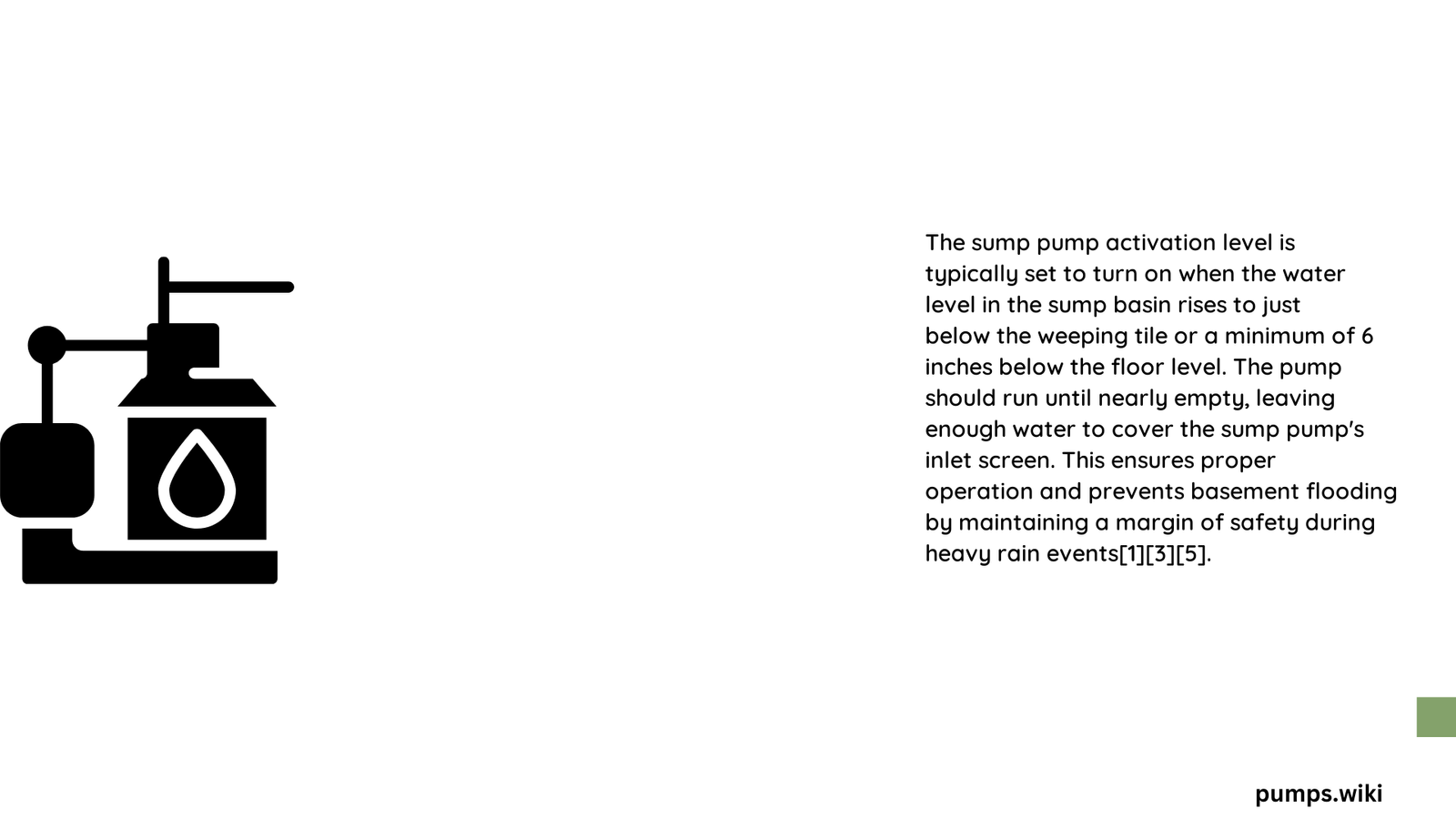Sump pump activation levels are critical for preventing basement flooding and maintaining a dry, safe home environment. Homeowners must understand the precise water levels at which their sump pump starts and stops to ensure optimal performance, protect their property from water damage, and extend the lifespan of their drainage system. This comprehensive guide explores the nuanced aspects of sump pump activation levels, providing expert insights into float switch mechanisms, water management strategies, and best practices for residential water control.
What Are Standard Sump Pump Activation Levels?
Optimal sump pump activation levels depend on several critical factors:
| Activation Parameter | Recommended Level | Purpose |
|---|---|---|
| Pump Start Level | 6 inches below floor surface | Prevent basement flooding |
| Pump Stop Level | 3-4 inches remaining in basin | Maintain pump lubrication |
How Do Float Switches Determine Water Levels?
Float switches play a crucial role in sump pump activation. Two primary types exist:
- Tethered Float Switches
- Attached to a flexible tether
- Adjustable activation range
-
Customizable trigger points
-
Rod-Operated Float Switches
- Fixed rod with mounted float
- Precise water level detection
- Less flexible but more consistent
What Challenges Affect Sump Pump Activation?

Homeowners may encounter several potential issues:
- Float Mechanism Problems
- Potential sticking
- Reduced mobility
-
Inconsistent water level readings
-
Water Level Complications
- Insufficient water for pump operation
- Risk of premature pump wear
- Potential system failure
How Can Homeowners Optimize Sump Pump Performance?
Practical strategies include:
- Regular maintenance checks
- Periodic float switch testing
- Ensuring minimum water coverage
- Professional system evaluation
What Tools Are Needed for Activation Level Adjustment?
Essential equipment:
– Adjustable wrench
– Bucket for water testing
– Measuring tape
– Voltage meter
Technical Considerations for Sump Pump Activation
Key Performance Metrics:
– Minimum water submersion: 3 inches
– Maximum activation height: 6 inches below floor surface
– Recommended pump cycling: Less than 10 times per hour
Installation Best Practices
- Disconnect power before adjustments
- Measure precise basin dimensions
- Test float switch multiple times
- Verify water flow characteristics
Advanced Troubleshooting Techniques
- Monitor pump cycling frequency
- Check for sediment accumulation
- Inspect electrical connections
- Evaluate float switch responsiveness
Cost and Maintenance Implications
Estimated Maintenance Costs:
– Basic float switch replacement: $50-$150
– Professional inspection: $100-$300
– Annual maintenance: $75-$200
Expert Recommendations
Professional waterproofing specialists suggest:
– Annual system evaluation
– Proactive float switch replacement
– Consider backup battery systems
– Implement water level monitoring technology
Conclusion
Understanding sump pump activation levels requires technical knowledge and consistent monitoring. Homeowners who invest time in comprehending their system’s specific requirements can significantly reduce water damage risks and maintain a dry, protected basement environment.
References:
– Boshart Sump Pump Float Switch Guide
– Tractor By Net Forum Discussion
– Jarboes Water Management Insights
